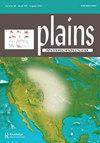Pawnee vessel function and ceramic persistence: Reconstructed vessels from the Burkett, Barcal, Linwood, Bellwood, and Horse Creek sites
Q2 Social Sciences
引用次数: 4
Abstract
During the AD 1750–1850 period, Pawnee households in the Central Plains made and used ceramic vessels less frequently than Arikara and Hidatsa households in the Northern Plains. Here I explore Pawnee vessel function and ceramic persistence during the seventeenth through nineteenth centuries through measurements and use-alteration analysis of 15 reconstructed jars from five Pawnee or ancestral Pawnee sites. These data indicate that ancestral Pawnee households stopped designing or using ceramics for cooking by the end of the Lower Loup phase, approximately AD 1750, although ceramic vessels were used for liquid storage and ritual practice into the early 1800s. The reasons why Pawnee women stopped cooking in ceramic vessels in the mid-eighteenth century, perhaps a century earlier than Arikara and Hidatsa women to the north, are probably linked to epidemic impacts and economic decisions about bison hide production for European trade.Pawnee器皿的功能和陶瓷的持久性:Burkett、Barcal、Linwood、Bellwood和Horse Creek遗址的重建器皿
在公元1750-1850年间,中部平原的波尼族家庭制造和使用陶瓷器皿的频率低于北部平原的阿里卡拉族和希达察族。在这里,我通过对五个波尼族或祖先波尼族遗址的15个重建罐子的测量和使用变化分析,探索了17至19世纪波尼族容器的功能和陶瓷的持久性。这些数据表明,波尼族的祖先在大约公元1750年的下卢普时期结束时,就已经停止设计或使用陶瓷做饭了,尽管陶瓷容器在19世纪早期还被用来储存液体和举行仪式。波尼族妇女在18世纪中期停止用陶瓷器皿做饭的原因,可能比北方的阿里卡拉族和希达察族妇女早一个世纪,可能与流行病的影响和为欧洲贸易生产野牛皮的经济决策有关。
本文章由计算机程序翻译,如有差异,请以英文原文为准。
求助全文
约1分钟内获得全文
求助全文

 求助内容:
求助内容: 应助结果提醒方式:
应助结果提醒方式:


